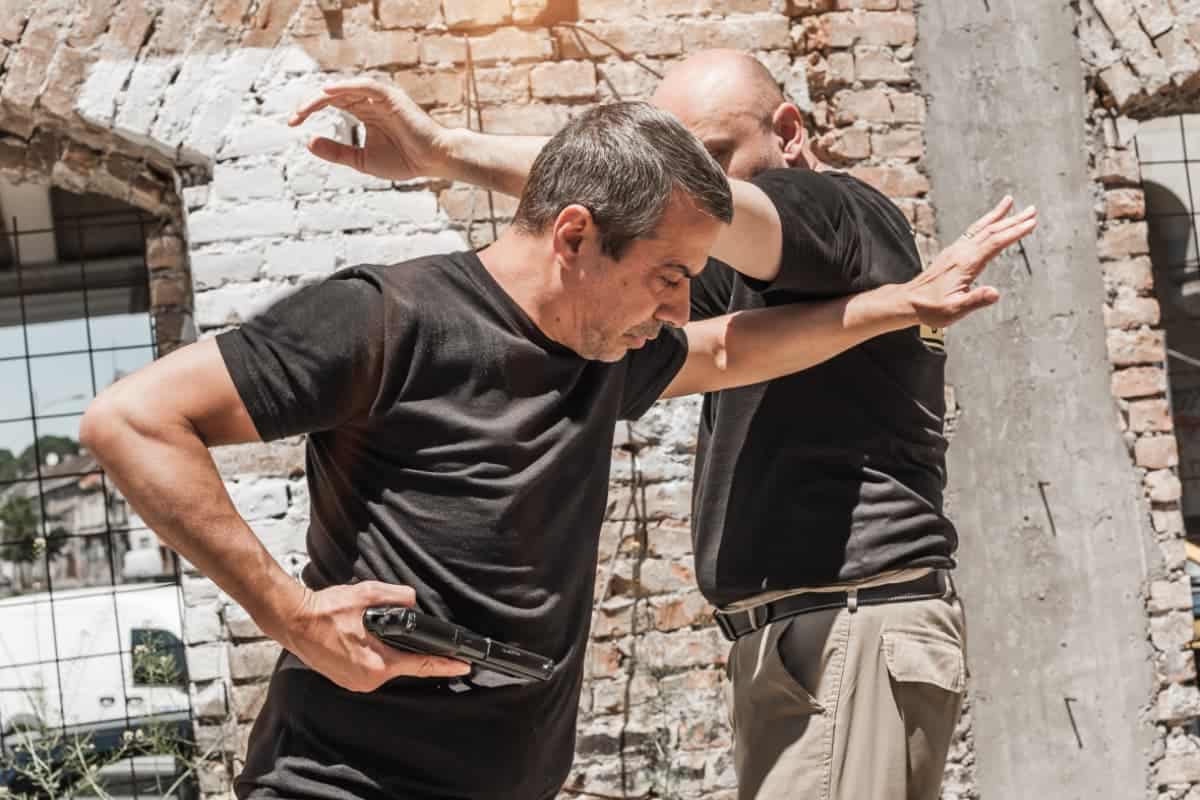Navy police officers constitute the civilian law enforcement agency of the U.S. Navy. Like police officers in any department, navy police officers often find themselves in physical altercations with civilians and suspects. As such, most of these officers must learn a martial art to de-escalate a situation and protect themselves from harm.
Navy police officers use different martial art forms, including Brazilian Jiu Jitsu, Krav Maga, and boxing. Most academies offer training in one or more of these art forms, but in some cases, navy police officers sign up for classes separately.
Most police officers are taught Defensive Tactics (D.F.), where they learn the basics of handling physical confrontation. However, sometimes this training is inadequate, and in this article, we’ll look at other martial arts used by navy police officers to subdue their opponents.
Table of Contents
Martial Arts Ideal for Police Training
Most navy police officers are bound to find themselves in physical altercations from time to time. Learning one of these martial art forms can help them quickly diffuse the situation and protect themselves.
Brazilian Jiu Jitsu
BJJ is a pretty famous martial art form today, with the sport of MMA popularizing its use. Brazilian Jiu Jitsu focuses on subduing an opponent using complex joint locks or choke holds.
These techniques can be executed quickly and against bigger and stronger opponents. Its effectiveness against opponents of varying sizes makes BJJ the best choice among navy police officers.
Additionally, BJJ techniques leverage balance and momentum to make up for any physical disadvantages of the practitioner. As such, even physically smaller and weaker fighters can use BJJ to subdue bigger opponents.
Finally, BJJ is the ideal way to get someone on the ground and keep them locked in position without causing them any harm. And as a police officer, the situation must be diffused without excessive damage to the suspect or the officer.
Wrestling
Wrestling is the quickest way to take the fight to the ground, where the police officer can restrain a suspect and put them in handcuffs. Unlike Brazilian Jiu Jitsu, which you can defend against with the proper technique, wrestling moves are difficult to counter even if the suspect is trained in martial arts.
And like Brazilian Jiu Jitsu, wrestling quickly immobilizes an opponent without causing too much physical harm. As such, it’s perfect for police officers who can be tried in a court of law by criminals for using excessive force.
Krav Maga
Krav Maga is a martial art developed by Israeli special defense forces by combining techniques from other martial arts, including judo, boxing, and aikido. While most martial art forms focus on form, style, and spiritual aspects, Krav Maga is ruthlessly practical.
Krav Maga aims to use any technique to subdue an opponent and conclude the fight as quickly and effectively as possible. Instead of holding an opponent down, you use force to attack vulnerable areas of the body, like the eyes, throat, and solar plexus. The officer focuses on these areas to prevent an opponent from getting violent so they can safely walk away from the fight.
A significant drawback of Krav Maga is that most police forces have a strict code of conduct that minimizes injury to civilians and suspects. So while Krav Maga is ideal in potentially dangerous situations, where the opponent has a knife or intent to kill, it’s not ideal when looking to restrain someone without harming them.

Boxing
You’ll notice that most street fights involve opponents swinging their fists or throwing a punch. Inexperienced fighters won’t attempt to kick a police officer or engage their lower bodies in a fight. So, learning to defend against punches and random swings can help police officers stay safe in a fight.
Boxing is an effective way to defend against punches and quickly knock out an opponent if the situation escalates. In fact, the U.K. even has a Police Boxing Association to teach officers to use their fists effectively and for the law.
Additionally, boxing has the advantage of building your upper body, improving endurance, and staying light on your feet, all of which are essential for good police work.
Final Thoughts
While police officers are meant to be respectful and keep civilians safe (even when the civilians are potential suspects), they must learn techniques to defend themselves and prevent further violence.
The martial art forms listed here are ideal for most situations and can help officers get out of physical altercations while also minimizing injury to both parties.

